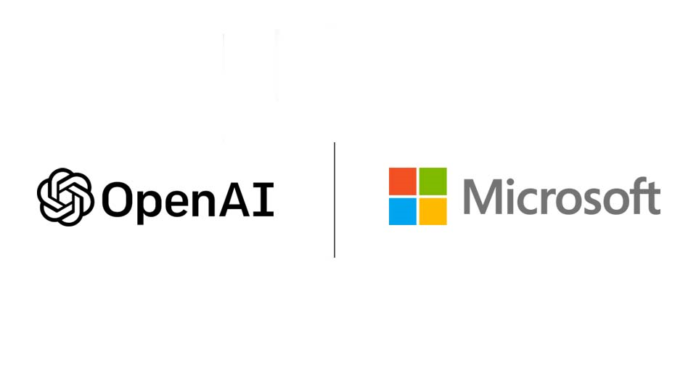Table of Contents
Since their first investment in 2019, Microsoft and OpenAI have moved from simple funding to deep codevelopment. Let’s break down what just happened. Their collaboration has now been formalized under a definitive agreement announced October 28 2025, which restructures OpenAI and locks in Microsoft’s position as both investor and core infrastructure partner.
Under the new structure, OpenAI becomes a Public Benefit Corporation (PBC), overseen by the non-profit OpenAI Foundation. This is a critical move. The goal is to align commercial incentives with OpenAI’s founding mission: developing advanced AI that genuinely serves the public interest.
Microsoft’s stake in this new entity is worth about $135 billion, or 27 percent of total ownership, a figure confirmed by Reuters. That valuation implies an overall OpenAI market value of roughly $500 billion, putting it among the world’s five most valuable technology companies. The price tag for the future of AI has been officially set.
Inside the New Terms: The Cost of the Future
Extended Intellectual Property and the Long Game
Microsoft’s IP rights to OpenAI’s frontier models are extended through 2032, ensuring guaranteed access to every major GPT-series model until that date.
The research IP—the methods, training data, and infrastructure designs—remains licensed to Microsoft until either 2030 or the formal declaration of Artificial General Intelligence (AGI), whichever comes first.
Microsoft retains exclusive rights to develop API-based products on Azure, even when those APIs are co-developed with third parties. Importantly, consumer-hardware IP remains under OpenAI’s control, preserving its independence in areas like robotics and edge-AI devices.
These clauses keep Microsoft’s software and cloud products deeply tied to OpenAI’s breakthroughs while leaving room for both to pursue separate research tracks.
AGI Verification and Governance: Grounding the Hype
A new independent expert panel will verify any AGI-related claim made by OpenAI. Until that panel confirms the milestone, Microsoft continues to share revenue from OpenAI products under existing terms. This panel adds an essential, external safeguard against premature declarations, helping to ground AGI discussions in evidence rather than hype.
The OpenAI board—now part of the PBC structure—includes independent directors, foundation representatives, and Microsoft observers but no controlling majority, reinforcing governance transparency.
Cloud and Infrastructure Commitments: The Quarter-Trillion Dollar Trade-Off
OpenAI has agreed to purchase $250 billion in Azure cloud services over the next several years—a quarter-trillion-dollar security blanket for Microsoft. This is the new backbone of OpenAI’s global operations.
But here is the massive trade-off: the deal ends Microsoft’s right of first refusal as sole compute provider. OpenAI can now choose other cloud vendors for non-API or consumer services, giving it greater resilience and bargaining power. Microsoft gets the revenue; OpenAI gets the operational flexibility it craved.
OpenAI is also permitted to release open-weight models once they meet specified safety and capability standards—a notable step toward transparency after years of closed-weight policies.
Read more on our article of, Microsoft Copilot adds real Talk Mode and Group Chats 2025 published on October 28th 2025, SquaredTech.
Strategic Implications: A New Blueprint for AI
For Microsoft this agreement secures a front-row seat to OpenAI’s frontier models for at least seven more years. It also binds one of the world’s largest cloud customers to Azure while enabling Microsoft to market its own AGI research without violating exclusivity terms.
For OpenAI the conversion to a public-benefit corporation allows OpenAI to raise capital without compromising its founding mission. Crucially, it gains the agility to collaborate with new partners, expand government contracts, and potentially release open-weight models—something it couldn’t do under earlier restrictions.
- For the Industry This deal sets a precedent for structured AI partnerships: long-term IP alignment paired with governance checks and verified safety procedures. Competitors such as Anthropic, Mistral, and xAI will likely face pressure to match this balance of transparency and commercial stability. For regulators, the combination of corporate flexibility and oversight by an independent foundation could easily become a blueprint for governing high-impact AI projects.
What to Watch Next
AGI Verification Process: Who joins the expert panel and how its standards are defined.
Open-Weight Releases: Whether OpenAI actually open-sources mid-range models by 2026.
Cloud Diversification: If OpenAI begins trial runs with Google Cloud or AWS for specific workloads.
Regulatory Response: The European Commission and FTC are expected to review the structure for antitrust implications.
Conclusion
The new Microsoft–OpenAI agreement locks in one of the most consequential alliances in modern technology. Microsoft gains guaranteed access to OpenAI’s most advanced models and sustained Azure revenue. OpenAI secures financial stability, operational freedom, and clearer oversight through its foundation-backed PBC structure.
The significance goes beyond corporate valuation. It establishes a model for responsible, verifiable AI development that other partnerships will likely emulate.
At SquaredTech, we see this as a turning point for enterprise AI — where control, accountability, and innovation finally begin to coexist at scale.
For more Updates: TechNews


